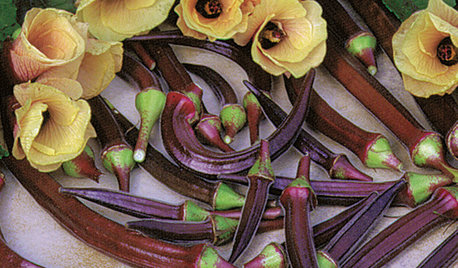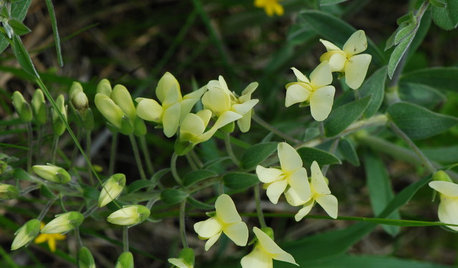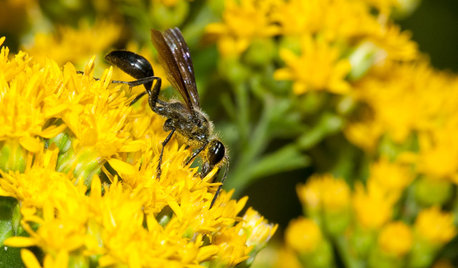okra cross-pollination
p_mac
13 years ago
Related Stories

GARDENING GUIDESSummer Crops: How to Grow Okra
Go for the gumbo with this quick-growing edible that brings colorful pods and delicate flowers to a summer garden
Full Story
NATIVE PLANTSPlant These Fall-Flowering Natives in Early Summer for Pollinator Love
These 3 groups of plants will support masses of beneficial insects come autumn
Full Story
FLOWERS AND PLANTSPlant Baptisia Bracteata for Blooms Pollinators Will Love
Longbract wild indigo is great in dry soil, and its spring flowers attract butterflies and bumblebees
Full Story
GARDENING GUIDESMeet the Grass-Carrying Wasp, a Gentle Pollinator of Summer Flowers
These fascinating insects nest in wood cavities and hollow plant stems
Full Story
GARDENING AND LANDSCAPINGBid Bad Garden Bugs Goodbye and Usher In the Good
Give ants their marching orders and send mosquitoes moseying, while creating a garden that draws pollinators and helpful eaters
Full Story
GARDENING GUIDESAttract Hummingbirds and Bees With These Beautiful Summer Flowers
Roll out a welcome mat for pollinators to keep your landscape in balance and thriving
Full Story
FARM YOUR YARDHello, Honey: Beekeeping Anywhere for Fun, Food and Good Deeds
We need pollinators, and they increasingly need us too. Here, why and how to be a bee friend
Full Story
GARDENING GUIDESWhat Prairies Teach Us About Garden Design
Wild spaces offer lessons for home gardeners about plants, pollinators and the passage of time
Full Story
GARDENING GUIDESGreat Design Plant: Asclepias Incarnata for a Butterfly Garden
Beautiful swamp milkweed makes it easy to help monarchs and other pollinators in eastern U.S. gardens
Full Story
EDIBLE GARDENSGarden BFFs? Why Your Vegetables Are Begging for Companion Plants
Foster friendships among plants for protection from pests, pollination support and color camaraderie
Full StoryMore Discussions







elkwc
Okiedawn OK Zone 7
Related Professionals
Clark Landscape Architects & Landscape Designers · Oconomowoc Landscape Architects & Landscape Designers · Winder Landscape Architects & Landscape Designers · Athens Landscape Contractors · Damascus Landscape Contractors · Downey Landscape Contractors · Lakeville Landscape Contractors · Uxbridge Landscape Contractors · West Covina Landscape Contractors · Fort Myers Decks, Patios & Outdoor Enclosures · Fort Worth Decks, Patios & Outdoor Enclosures · Frederick Decks, Patios & Outdoor Enclosures · Hayward Decks, Patios & Outdoor Enclosures · Lincoln Decks, Patios & Outdoor Enclosures · St John's Kirk Decks, Patios & Outdoor Enclosuresp_macOriginal Author
Macmex
Brad Edwards
Brad Edwards
Okiedawn OK Zone 7
authereray
Roy Harper